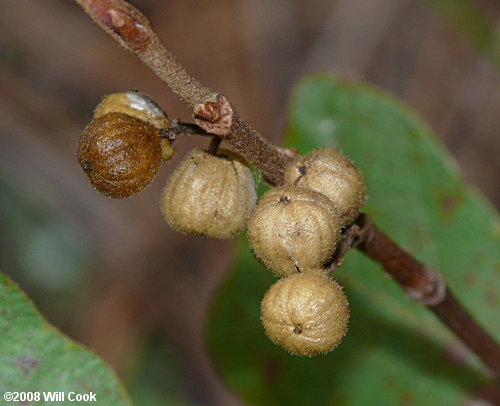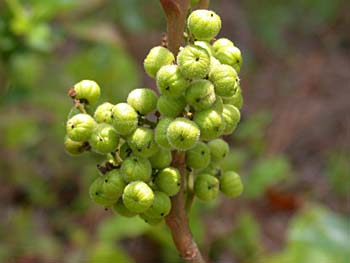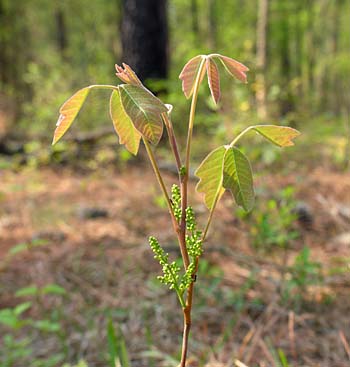
Atlantic Poison-Oak is a low shrub of dry habitats. Fairly common in the Coastal Plain, especially in the Sandhills, Poison-Oak is rare in the Piedmont of North Carolina. All parts of the plant cause severe skin irritation in most people.
Atlantic Poison-Oak differs from the very common Eastern Poison-Ivy (Toxicodendron radicans) in that the leaf rachis and petiolules and stems have velvety pubescence. It also only has a shrub form, while Poison-Ivy is normally a woody vine, but can grow like a shrub.
Fall color is brilliant orange-red.
Chatham Co., NC 9/20/08.

The tannish-white drupes are also covered with a velvety pubescence, while those of Poison-Ivy are smooth.
Chatham Co., NC 9/20/08.

Pale tan ripe drupes.
Scotland Co., NC 10/4/2009.

Poison-Oak has rich red fall color.
Scotland Co., NC 10/4/2009.



